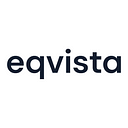How to set up ESOP for your startup?
ESOP (Employee Stock Options Plan) is a compensation strategy employed by companies to incentivize and retain deserving candidates. Employers offer company stocks to the employee participants at a certain price and encourage them to acquire more or increase their values through company performance. Employees look at it as a tool to multiply their wealth during the time of their stay within a company.
It is also proven to motivate workers to perform better. Their stake in the organization makes the employees more accountable and loyal.
During the Pandemic, US companies with ESOP benefits have retained 4x more employees.
How does ESOP work?
Founders create an ESOP pool by diluting a certain part of their equity and allocating them to the employees. In cases of pool exhaustion, they dilute the pools further and raise funds externally. On the other hand, the employees receive shares or stock options based on their experience or productivity, as per the company’s regulations. Sometimes, new employees are given stock options as a part of their CTC (Cost to Company).
The stock options are given to the employees at a standard rate called the ‘Strike price’. After granting the options, the employers may need the employees to serve the ‘vesting period’ for at least 2 years to exercise their rights.
The purpose of having a vesting period is to prevent employees from quitting too early or leaving the company after acquiring company shares.
Some companies may urge employees to exercise their rights over stocks in stages. For example, after serving the vesting period an employee shall be given power over 25% of their stocks. The following year may witness an increase of 50% power over the stocks and 75% for the next year. However, an employer exercising his stock rights is optional. When the employee leaves the organization after serving the vesting period and acquiring stock options, the company either repurchases them at the current market price or offers them to the employees as a retirement fund.
Benefits of ESOP for startups
- From an employer’s perspective, startups may not have sufficient funds to compensate their employees with competitive market pay scales. Using stock options in such cases can help them balance employee expectations and company reputation.
- For an employee, it is an additional source of income while also experiencing voting rights in important company decisions.
- ESOPs provide job security and economic stability for the workforce, which can lead to employee wellness.
- Deserving employees have the least tax consequences because of an ESOP setup. Only in cases of the employee shares being sold in return for profits, capital gains tax is incurred.
- Employers offer these stock options at a considerably lower price than that of the market rate. If the company performs well in the future, the ESOP participants can sell them at a higher market value.
How to establish an ESOP plan for your startup?
- Understand the law — You may consider getting the assistance of a lawyer or professional service provider to plan your ESOP scheme. A meticulous strategy of the number of grants, pool size, vesting schedule, exercise period, and administration will help you verify or modify your clauses according to the legal regulations of your region.
- Get a valuation certificate — You will need a 409a valuation certificate to ensure smooth auditing and accounting processes. This could be any valuation the company has undergone in the last 6 months.
- Get the board approval — To proceed with the ESOP scheme to the next stage, you need to get the board approval through a formal meeting. It must be done by passing a special resolution at the shareholders’ meeting. The votes in favor must be thrice higher than the votes against the resolution.
- Grant the options — You can now start granting options to your employees depending on your pool size and selection criteria. Draft and sign the grant letters with all the ESOP rules including the vesting schedule and exercise options.
What should you consider before setting up your ESOP scheme?
Consider every possible hindrance to your plan in advance. For example, how will the stock options get distributed or retained if there is a sudden ownership change? The impacts such changes can have on your ESOP setup should be discussed. What happens if an employee violates the vesting schedule? In cases of employees leaving the companies after gaining access to the shares, the companies need to repurchase their shares. The board must come up with a strategy to handle such situations. It is recommended not to exhaust the pool early. Your vesting schedule should suit your business cycle and goals and they must be communicated to the employees before granting them access.
Summing up
There are at least 6,482 ESOPs in the U.S., with 13 million participants, according to an NCEO study. The growth of incentive and non-qualified Stock options for employees in recent years has been tremendous because of the caution involved in their implementation. Understanding the legal requirements of establishing an ESOP in your startup and planning your pool size can be a little overwhelming initially. You can join hands with Eqvista in such challenging times to make your journey fruitful. Our team of experts is available round the clock to help you set up ESOPs from scratch. If you need more clarifications on ESOP and allocation strategies, get in touch with us today!
